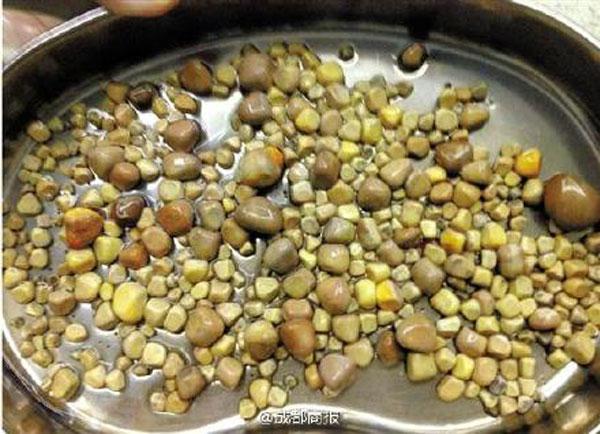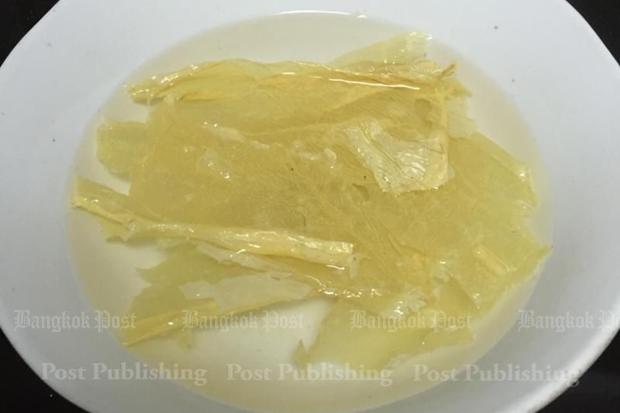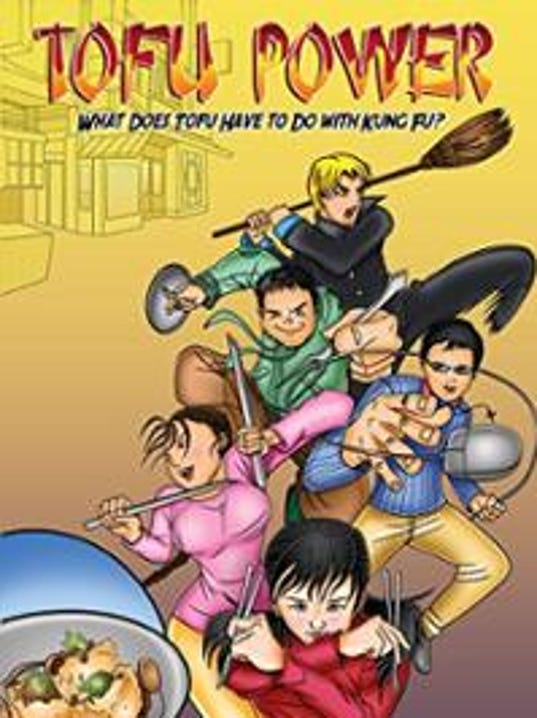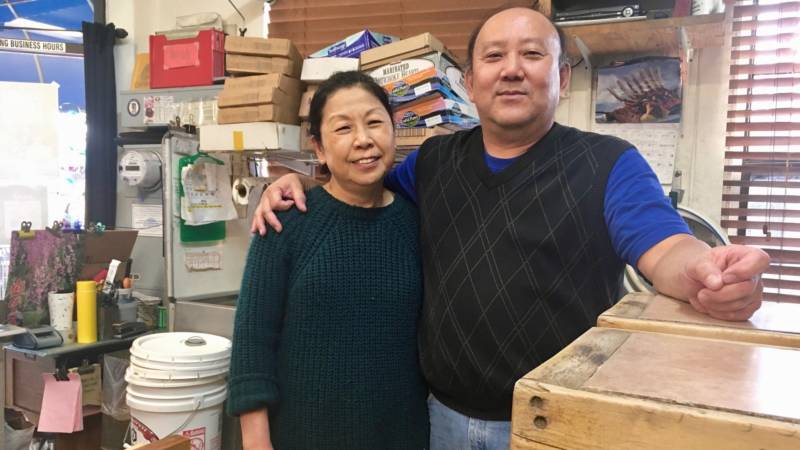Where Stinky Tofu Is at Its Malodorous Best
By CHRIS HORTONNOV. 19, 2017

The Dai Family House of Unique Stink in Taipei, Taiwan, has cultivated a following among aficionados of stinky tofu. Credit An Rong Xu for The New York Times
TAIPEI, Taiwan — In a small, unassuming building below the growing skyline of Taipei’s Xinyi District, Wu Hsu Pi-ying has built a shrine to stink, attracting the faithful from far and wide.
Since 1989, Dai Family House of Unique Stink has cultivated a following among aficionados of one of Taiwan’s most prevalent, and most pungent, snacks: stinky tofu.
“We’re happy,” Ms. Wu said, sitting on a low stool at her restaurant. “We give people healthy, natural food, and it’s super cheap.” Menu items range from 50 cents to $3. “I don’t need to make a lot of money.”

Wu Hsu Pi-ying, the owner of Dai’s, has spent 30 years creatively pushing the boundaries of stinky tofu. Credit An Rong Xu for The New York Times
A fermented bean curd that came via immigrants from mainland China, stinky tofu has long been a staple in Taiwan. A versatile food, it can be fried, steamed or cooked in soup, all of which are on the menu at Dai’s. Ms. Wu also pioneered cold stinky tofu, which is served covered with crispy flakes of seaweed-flavored batter, the edges of the tofu slab a bluish-gray.
Across Taiwan, deep-fried stinky tofu is commonly sold at stalls in night markets, where its odor carries for long distances.
Describing that odor is a matter of contention. As with eaters of smellier cheeses, proponents of stinky tofu tend to use the term “chou,” or stinky, in a positive context. Those who detest the dish might compare it to smelly socks or even to rotting garbage. Then again, so might those who enjoy it.

The store’s logo is stamped on every slab of tofu. Credit An Rong Xu for The New York Times
Lovers and haters tend to agree on one thing: Stinky tofu is a much less intense experience for the palate than it is for the nose.
One exception is the stinkiest tofu available at Dai’s, aptly named stink paste. Fermented at a low temperature over two years in a vegetable and medicinal herb-based brine, this tofu decomposes and attains a creamy texture and gray hue. If stench were spiciness, it would be a habanero-plus, making its presence felt long after swallowing.
Previously an artist, Ms. Wu, 70, has spent the last 30 years creatively pushing the boundaries of the stinky tofu realm. She no longer works every day — her son and daughter-in-law help run the shop when she’s resting or traveling — but she still oversees operations. She has the air of a master at the top of her game.

Chang Te-feng taking orders and running the cash register at Dai’s. Credit An Rong Xu for The New York Times
“I’m the one who’s done everything here,” she said, smiling. “If I don’t get it, no one does. I’m the only one in the world who gets it.”
She said she learned the art of fermenting bean curd from her parents, who had made it and sold it wholesale for more than 60 years. (The restaurant takes its name from her stepfather’s surname.)
After bouncing around the United States throughout the 1980s, Ms. Wu returned to her native Taipei in 1989 and decided to open a restaurant focused solely on stinky tofu. Others have followed, but hers has won an exceptional reputation.

The Sichuan-style stinky tofu noodle soup. Credit An Rong Xu for The New York Times
The first location, in the Wanhua District of old Taipei, was a tiny, standing-room-only affair that drew complaints from neighbors who took their story to Taiwan’s raucous local news media. The cramped space and bad publicity compelled her to move to a larger shop.
All of Dai’s tofu production and fermentation is done in the nearby city of Taoyuan, with the store logo stamped on every slab. The restaurant’s neighbors, a convenience store and an auto repair shop, had praise for Dai’s tofu, and said the restaurant’s ventilation system, which releases kitchen fumes three stories up, was good at minimizing odors.
When on duty, Ms. Wu takes orders and chats extensively with guests, while Chang Te-feng, her 74-year-old partner, operates the cash register.

Patrons at lunch. Credit An Rong Xu for The New York Times
Working on her tofu noodle soup with metal chopsticks, one customer, Lin Yun, said she trusted Ms. Wu’s creations more than any others in Taipei.
“The flavor of the stinky tofu here is truly different — it’s really delicious,” Ms. Lin said. Pointing at a chunk of cold stinky tofu, she praised its probiotic properties. “Some doctors will tell you that if you’re having gastrointestinal problems, you just need to eat this for three days straight.”
A framed calligraphic ode to stinky tofu’s health benefits hung on the wall above Ms. Lin, praising the dish’s ability to clear the lungs, cure constipation and increase the flow of chi, the vital life force of traditional Chinese medicine.

The cold stinky tofu is a specialty of Dai’s. Credit An Rong Xu for The New York Times
Some customers, however, are simply in it for the flavor.
Paul Hsiao, dining with two friends who had joined him from across town, has been a regular at Dai’s for more than seven years. “I love to eat it,” he said. “Whether it’s healthy or not is irrelevant to me.”
Steamed stinky tofu was one of his favorites, he said. It’s a simple, satisfying dish — a block of Dai’s signature tofu topped with enoki and shiitake mushrooms and sprinkled with green onion, sitting in a shallow bowl of umami-rich broth and edamame.
Some stinky tofu in Taiwan uses brine containing seafood or pork, while some vendors have been found to use chemicals as a shortcut to obtaining the funky odor. All of the dishes at Dai’s are plant-based, Ms. Wu said, which helps to draw vegetarians as well as vegans.
Not everyone who enters the House of Unique Stink enjoys the experience, she said. Whether customers love it or hate it, Ms. Wu doesn’t seem bothered. Just as with art, not everyone knows how to appreciate stinky tofu.
“Now and again a tour bus full of foreigners stops by,” she said. “Some of them love it. Others will spit their first bite into a tissue.”
Although Ms. Wu is no longer in the restaurant every day, full retirement is not on her agenda anytime soon.
“I’m still going to be behind the whole operation,” she said. “It’s still early days.”
A version of this article appears in print on November 20, 2017, on Page A5 of the New York edition with the headline: In Stinky Tofu Kitchen, The Vent Rises 3 Stories







 Reply With Quote
Reply With Quote



















 The Sichuan-style stinky tofu noodle soup. Credit An Rong Xu for The New York Times
The Sichuan-style stinky tofu noodle soup. Credit An Rong Xu for The New York Times








:focal(2143x1408:2144x1409)/https://public-media.smithsonianmag.com/filer/7f/5f/7f5f78d5-f722-46bf-85e2-da09ae47fc1b/tofu4.jpg)

/https://public-media.smithsonianmag.com/filer/eb/76/eb76d86a-16b8-4fb9-a14f-90dbfa2993ac/tofu2.jpg)
